How much electricity does a split system consume: calculation examples + options to save
Every home has technology that makes life easier and makes life more comfortable.But the more household appliances, the higher the electricity bills their owners receive.
Many people cannot decide to buy an air conditioner, afraid of the colossal sums that they will supposedly have to pay for the electricity they use. Because of this, you have to deny yourself comfort and fight the sweltering heat alone.
Is climate control technology really that “gluttonous”? Let's find out what affects the consumption of a split system and whether it is possible to reduce energy costs when using it.
The content of the article:
Energy efficiency indicators
Most modern split systems combine the functions of cooling and heating air. In each of these modes, the equipment consumes a different amount of energy resources. The exact consumption depends on many factors.
Device energy efficiency factors
The ratio of the power produced by a device to the energy consumed, which is necessary for its generation, is called the energy efficiency coefficient. It is this indicator that expresses the energy efficiency of climate control equipment.
Split systems have two of them:
- Coefficient of performance. Allows you to determine the energy consumption required by the device in cooling mode.
- Thermal coefficient. Makes it possible to assess the level of energy consumption when operating for heating.
To calculate the energy efficiency coefficient, you need to know the parameters of consumed and produced power in different modes, indicated in the equipment characteristics.
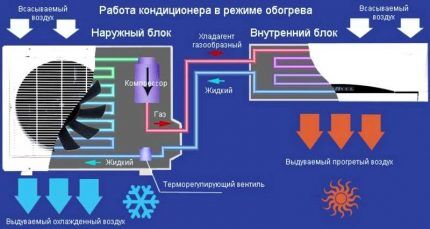
For example, let's take one of the models of split systems from AUX - ASW-H07A4.
Let's calculate its EER using the following formula:
K=Q/N,
Where:
- K – the required quantity;
- Q – power of the device in cooling mode (amount of generated energy in kW);
- N – power consumption (the amount of energy taken from the network in kW).
We get: K = 2.1 / 0.65 = 3.23
Therefore, the EER of the model taken is 3.23. The higher the final indicator, the more economically the device uses electricity.
The thermal coefficient COP is calculated using a similar formula. These values must be indicated in the technical data sheet of the device. They can also be obtained from the sales consultant at the time of purchase.
The values of the split system power consumption and output declared by the manufacturer, as well as COP and EER, may differ to one degree or another from the real ones. It all depends on the conditions in which the device is operated.
At enterprises where testing and calculations of energy efficiency of equipment are carried out, conditions are close to ideal. In practice, they are not always observed.
Therefore, it is important to take into account some rules for operating air conditioners to prevent excessive consumption of electricity. We'll look at them in more detail a little later.
The parameters of the considered COP and EER coefficients are fundamental when dividing split systems into energy efficiency classes according to the generally accepted scale.
Energy efficiency classes of split systems
The level of efficiency or “anti-efficiency” of split systems, like many other household appliances, is clearly demonstrated by the energy efficiency scale.
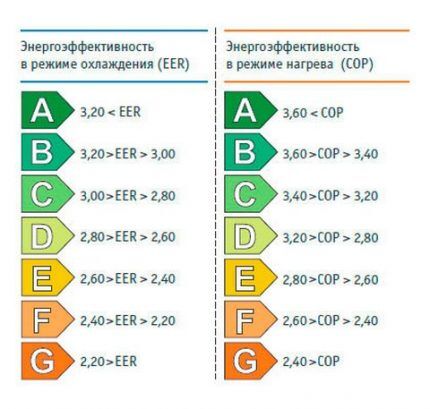
Since the category of climate control equipment under consideration is characterized by two types of output power, it is also assigned two energy efficiency classes. Of course, this applies only to those devices that are designed for both heating and cooling of rooms.
The most economical group of equipment are considered to be models marked “A”, the most energy-consuming - “G”. As existing technologies are constantly improving, manufacturers have begun to produce devices whose efficiency exceeds Class A.
In this regard, the scale was expanded by adding the designations “A+», «A++», «A+++" Such models are an order of magnitude more economical, but also much more expensive than others.
Factors of minor importance
In addition to coefficients and energy efficiency classes, there are a number of additional factors that influence how much electricity the split system will consume:
- compressor type;
- thermal power of the device;
- room area;
- difference between internal and external temperatures.
The air conditioner's flow rate is largely determined by the compressor installed in the device. The amount of energy required depends on the frequency of its rotation. Conventional mechanisms operate on a start/stop principle.
When the sensor detects temperature changes above or below specified levels, the electronic unit starts the engine. After reaching the desired temperature values, it turns off again. In standby mode, virtually no electricity is consumed.
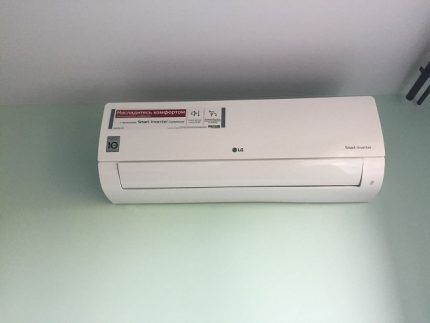
The scheme according to which they work is considered more effective and economical inverter split systems. In these models, compressors operate non-stop, smoothly changing rotation speed and, accordingly, power consumption.
The only drawback of equipment with inverter compressors is the high price. However, judging by user reviews, it pays for itself quite quickly.
The larger the area the air conditioner serves, the higher its consumption will be and the greater the thermal power it should have. This parameter is measured in BTU and is designated in numbers - 7, 9, 12, 18, 24, etc.
For average apartments, the first three options are most suitable.
The rest are installed in large houses and administrative buildings:
- "Seven" corresponds to a value of 7000 BTU (1BTU ≈ 0.3 W). That is, its performance is approximately 2100 W.Such a unit can efficiently serve premises with an area of 20-25 m², while consuming about 0.7 kW/h.
- "Nine" has a power of 9000 BTU or 2700 watts. It is designed for objects with an area of 25-30 m² and consumes electricity within 0.8 kW/h.
- "Twelve" with a capacity of 12,000 BTU or 3,600 W, designed for rooms up to 40 m². Its consumption is about 0.95-1 kW/h.
If you do not compare the thermal power of the device with the area of the room and buy an air conditioner with a lower value than is actually necessary, you may encounter unpleasant consequences.
First of all, this is fraught with increased energy consumption and a shortened service life of the device due to excessive loads.
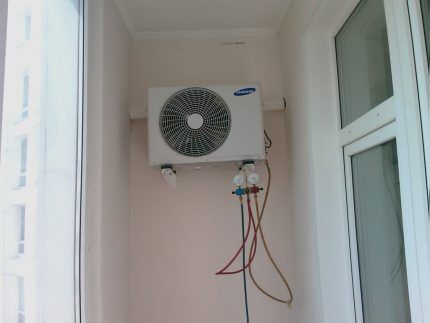
The temperature outside the window, or more precisely, its difference with the temperature in the room served, also affects the amount of energy consumption.
For example, the outdoor thermometers have risen to +40 °C, and the room needs to be cooled to 22 °C. In this case, the air conditioner will consume more energy than if it were 32 °C outside.
Approximate energy consumption calculations
Myths about the prohibitively high energy consumption of split systems lack convincing justification. Often, incorrect information appears because users confuse the concepts of power produced and power consumed.
In fact, the energy consumed by the equipment is less than the energy output. This can be seen in the example of the same popular household model from AUX.Looking at its technical characteristics, we see that in cooling mode the device draws 650 W and produces 2100 W.
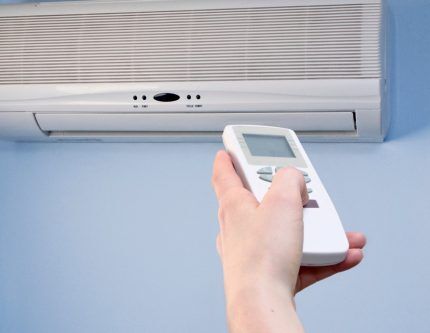
Model ASW-H07A4 for rooms of 20-25 m² works on the start/stop principle, consuming about 0.7 kW/h. To calculate how much this split system consumes per day and month, let’s assume that it is turned on for 8 hours a day.
It is worth considering that the equipment will use full power only when it reaches the desired temperature. The compressor is in an economical standby mode for a certain period.
Even if you take it to the maximum, the device will consume no more than 5.6 kW per day, and 168 kW per month.
According to the tariff for the population in force in 2018, 1 kW will cost 5.38 rubles. This means that operating an air conditioner per day will cost no more than 30 rubles, per month – no more than 900 rubles.
We emphasize that the above calculations are approximate, since they do not take into account the operating features of the device.
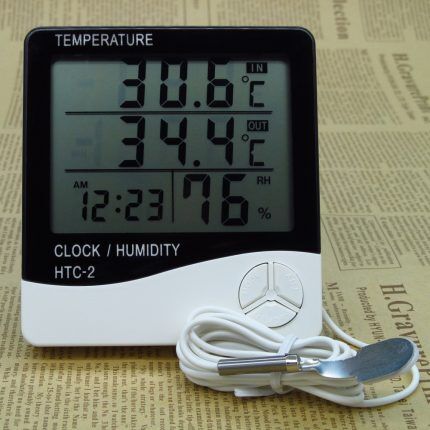
Overall costs can be lower when choosing equipment with an inverter compressor, saving up to 40% of energy resources without wasting power. On average, such devices consume about 0.5-0.6 kW/h.
Compared to some household appliances, a split system, which consumes 0.5-1 kW/h depending on the power of the model, works more economically.
For example:
- a regular iron consumes 2-2.5 kW/h;
- the heater draws at least 2 kW/h;
- the refrigerator takes 1-1.5 kW/h;
- a washing machine requires up to 2.5-5 kW/h;
- electric kettle - 1.5-2 kW/h.
A computer and plasma TV consume less electricity.
How to reduce energy consumption?
The actual electricity consumption when operating a split system can be significantly reduced. To do this, you should take care of the normal operating conditions of the equipment, properly care for it, and promptly prevent malfunctions that affect the power of the device.
Next, we will talk about the nuances and rules that every owner of climate control equipment should know. By following them, you can extend the life of the device, ensure its maximum efficiency and reduce energy costs.
Method #1 - buying economical equipment
If you want to purchase an economical split system model, we recommend that you pay attention to several devices from trusted manufacturers that are characterized by the lowest energy consumption.
Mitsubishi Electric MSZ-LN25VG/MUZ-LN25VG system
The inverter model of the famous Japanese brand consumes only 485 W in cooling mode and 580 W in heating mode.
At the same time, the output power is very high. The device has been assigned the highest energy efficiency class – A+++.
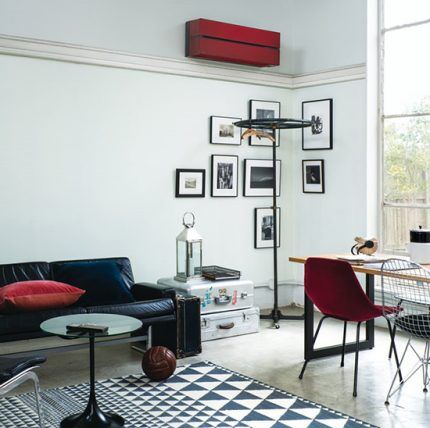
Among the useful functions it is worth noting:
- economical night mode;
- 2-stage air filtration/disinfection system;
- wi-fi interface for remote control from a smartphone - allows you to cool/warm the room before the household arrives;
- system 3D I-SEE – scans the room, identifies the location of people, evenly distributes air masses in two directions, eliminating overheating and hypothermia of individual parts of the room; in the absence of people, the sensor automatically activates the energy-saving mode;
- Hybrid coating of the case protects against dirt and dust.
The model is distinguished by its low noise level, maintaining operability down to a temperature of -25 °C. The disadvantage of the product is its high cost - about 74 thousand rubles.
Air conditioner Panasonic CS-E7NKDW
A model from another Japanese brand costs half as much – about 33 thousand rubles. This device also runs on an economical inverter compressor with a continuously variable power control system.
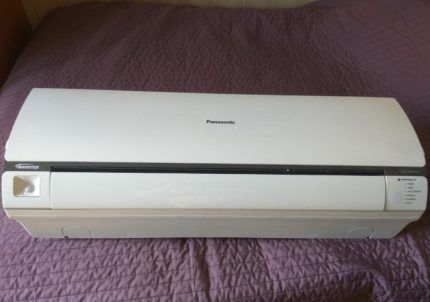
The list of functional features of the device:
- sensor Autocomfort and system Mild Dry – allow you to achieve maximum comfort in the room;
- energy-saving night mode;
- timer for setting on/off;
- automatic restart after power outages;
- mode Powerful – accelerates the cooling/heating of the room.
The equipment operates quite silently and copes well with its tasks. The disadvantages are the insufficiently effective air purification system, limited temperature conditions when operating for heating - down to -5 °C.
Split system Ballu BSLI-07HN1/EE/EU
This model of the Chinese brand is one of the most budget-friendly among inverter split systems. It can be purchased at a price of 19 thousand rubles.
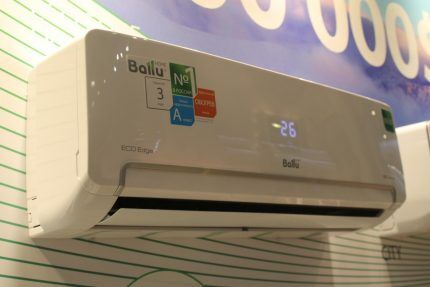
Despite the budget price, the equipment is equipped with many useful functions:
- economical night mode;
- timer for setting on/off;
- self-diagnosis of emerging faults;
- preliminary cleaning of air flows;
- operational cooling of the room in turbo mode.
The minimum temperature during heating operation is -10 °C. The disadvantages of the product include noise, an inconvenient remote control, and a not very clear timer setting scheme.
Method #2 - close access to outside air
The first thing you need to do before turning on the air conditioner in order to save energy resources is to tightly close all the vents, windows and doors. If there are gaps in door or window openings that allow air to pass through, they should be eliminated if possible.

On sunny days, it is advisable to lower the blinds and cover the windows with thick curtains or protective reflective film. It is especially important to follow this rule in rooms with windows facing the hot, sunny side.
Such manipulations help minimize the loss of warm or cooled air, which depends on the mode in which the air conditioner operates.As a result, the risk of redirecting most of the air conditioner's power to compensate for heat input from outside is avoided.
A device exposed to direct sunlight draws at least 5% more energy than normal.
Method #3 - choosing the right temperature
Incorrectly selected cooling temperature is the most common mistake among split system users.
The safest and most comfortable temperature range for humans is considered to be between 23-24 °C.

By choosing literally 3-5 values less than the recommended norm, you will jeopardize your health and force the equipment to work at maximum power. Such experiments are fraught not only with colds, but also with increased electricity consumption.
Method #4 - proper care of equipment
The technical condition of the device affects its performance. If the mechanisms are contaminated, the integrity of individual elements is damaged, or there is insufficient amount of refrigerant in the system, the power of the equipment may drop significantly. Rules for filling the system with freon reviewed here.
The air conditioner will consume energy, but will not be able to cope with its direct responsibilities.
To avoid this, you need to properly care for your climate control equipment:
As you can see, any split system requires regular maintenance. Otherwise, you may encounter increased energy consumption, serious breakdowns or irreversible failure.
We recommend that you familiarize yourself with the features self-service split systems.
Method #5 - ensure proper operation
Each split system is designed to operate in a certain temperature range.This nuance must be clarified before purchasing. You can view the information in the instructions included with the product.
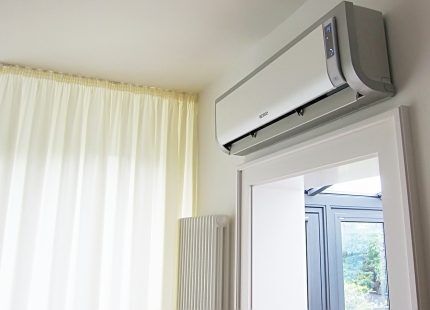
Permissible operating temperatures must not be violated, otherwise the efficiency of the device will drop sharply. If the minimum recommended temperature for using the device in heating mode is -5 °C, then it should not be turned on when it is colder outside.
To heat rooms in cold weather, there are special models of split systems. In such conditions, they will use electricity more efficiently.
Conclusions and useful video on the topic
Explanations regarding the energy efficiency of split systems:
Analysis of the advantages of economical inverter models:
How to choose an air conditioner based on room size:
If you decide to purchase a split system, this does not mean that you will have to pay huge sums for electricity. The main thing is to choose an economical model and use it correctly.
Remember to turn off the air conditioner when not needed, keep it clean, set the optimal temperature, and protect the cold by closing windows and doors. These recommendations will help you live in comfort and not overpay for wasted kilowatts.
What saving methods do you use? Share your secrets with other users - leave your comments in the block below.
Do you think that there is no point in saving energy when operating a split system? Or do you categorically disagree with one of the methods proposed in our material? Write your opinion under this article.




Yes, the split system does not consume that much electricity. Let's be honest - air conditioners and split systems are not installed by the poorest people who are willing to pay a certain amount for their own comfort. If saving energy is so important, then when choosing a system, pay attention to the energy efficiency indicator and buy A+++ class. Well, or endure the heat and fan yourself with a homemade paper fan.
I agree, the comfort is worth it. Moreover, the money is not that big. Over the course of a month, my air conditioner consumes a little less than 200 kW. Except that in extreme heat, when it works around the clock, more goes away.
You, madam, live in 50-60 degree heat and with a minimum of finances, I’ll look at you, will you save or not. The population strata are different! Of course, in Russia the only people who don’t save are greedy officials and their children!
And in what region of our country is there constant heat of sixty degrees? In any case, if you need an air conditioner, but need to save on electricity, then you should pay attention to Panasonic. They have models that consume 470-480 watts.
Roman, visit the steppes of the Republic of Kalmykia or Aksaraysk before being clever, people live there too. Regarding savings, split systems are available in different price ranges; if desired, you can find them for 10-13 thousand rubles. Another point is that you need to operate without fanaticism, and also do not neglect preserving the cold by closing the windows with curtains, blinds, etc. foil, etc.
We have an air conditioner in our office. Since the office is not heated, the air conditioner has to be turned on for heating all the time.But the room area is small, so electricity is consumed sparingly. We also do not open windows either in cold or warm seasons, because with the window open we will cool or heat the street, and this is of no use. Therefore, the recommendations are really practical.